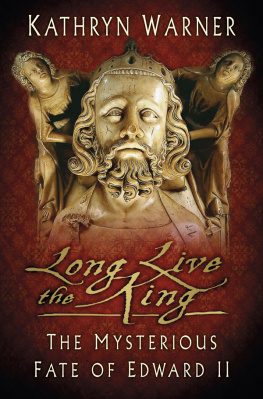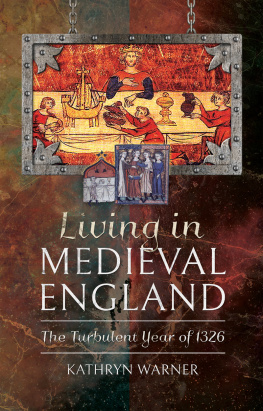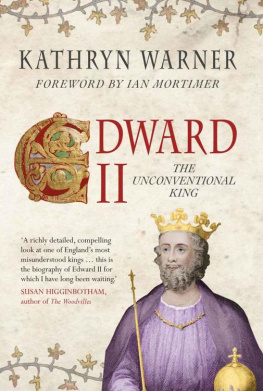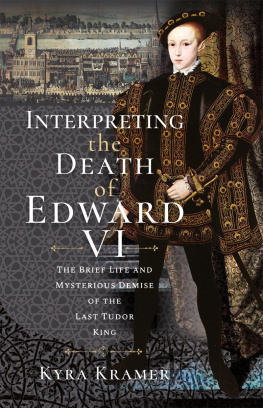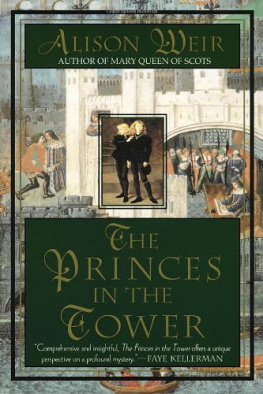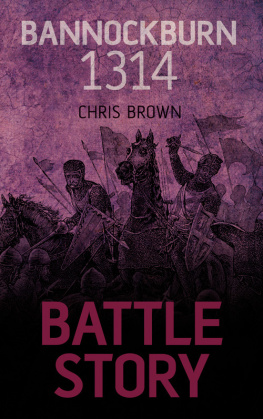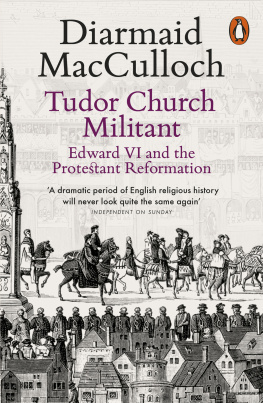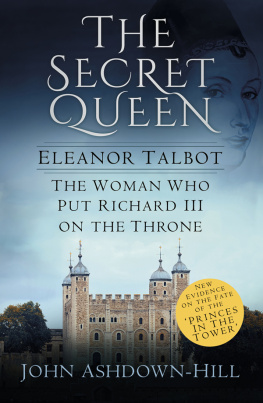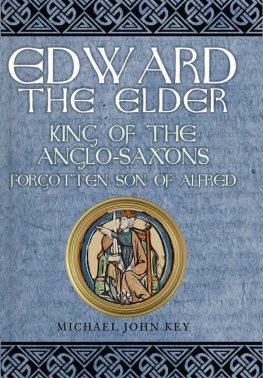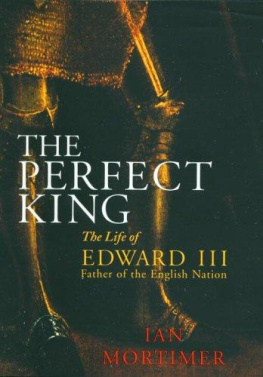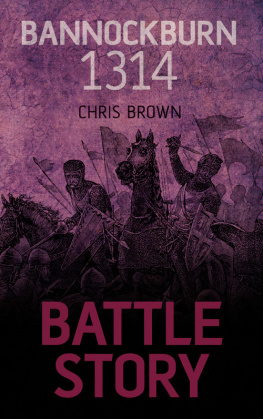Edward IIs Nieces:
The Clare Sisters
Edward IIs Nieces: The Clare Sisters
Powerful Pawns of the Crown
Kathryn Warner
First published in Great Britain in 2020 by
Pen and Sword Transport
An imprint of
Pen & Sword Books Ltd
Yorkshire - Philadelphia
Copyright Kathryn Warner, 2020
ISBN 9781526715579
eISBN 9781526715593
Mobi ISBN 9781526715586
The right of Kathryn Warner to be identified as Author of this work has been asserted by her in accordance with the Copyright, Designs and Patents Act 1988.
A CIP catalogue record for this book is available from the British Library.
All rights reserved. No part of this book may be reproduced or transmitted in any form or by any means, electronic or mechanical including photocopying, recording or by any information storage and retrieval system, without permission from the Publisher in writing.
Pen & Sword Books Ltd incorporates the Imprints of Pen & Sword Books Archaeology, Atlas, Aviation, Battleground, Discovery, Family History, History, Maritime, Military, Naval, Politics, Railways, Select, Transport, True Crime, Fiction, Frontline Books, Leo Cooper, Praetorian Press, Seaforth Publishing, Wharncliffe and White Owl.
For a complete list of Pen & Sword titles please contact
PEN & SWORD BOOKS LIMITED
47 Church Street, Barnsley, South Yorkshire, S70 2AS, England
E-mail:
Website: www.pen-and-sword.co.uk
or
PEN AND SWORD BOOKS
1950 Lawrence Rd, Havertown, PA 19083, USA
E-mail:
Website: www.penandswordbooks.com
Chapter 1: The Clare Sisters
Chapter 2: The New King
Chapter 3: Journeys to Ireland
Chapter 4: Two Young Widows
Chapter 5: The Earl of Gloucesters Heirs
Chapter 6: The First Abduction
Chapter 7: Widowed Again
Chapter 8: Two Favourites, Two Weddings
Chapter 9: A Rich Inheritance
Chapter 10: The New Favourite
Chapter 11: The Despenser War
Chapter 12: Contrariants
Chapter 13: In the Kings Favour
Chapter 14: Unequal Treatment
Chapter 15: A Secret Lover
Chapter 16: Intruder and Pharisee
Chapter 17: A Protest Against the Regime
Chapter 18: The End of Hugh Despenser
Chapter 19: Deposition
Chapter 20: Rebellion and Abduction
Chapter 21: The King Lives
Chapter 22: A Belated Funeral
Chapter 23: Death of an Earl
Chapter 24: A Third Abduction and a Death
Chapter 25: The Young Generation
Chapter 26: The Last Sister
Chapter 27: The Final Years
Appendix 1: Brief Biographical Details of the Clare Sisters
Appendix 2: The Sisters Children
Appendix 3: The Descent of the Sisters Inheritances
Abbreviations
Endnotes
Bibliography
Introduction
B etween 1292 and 1295, three women were born who were granddaughters of the reigning king of England, Edward I, and daughters of the greatest English nobleman of the late thirteenth century, Gilbert the Red Clare, Earl of Gloucester and Hertford. Eleanor, Margaret and Elizabeth Clares lives were full of drama, intrigue, conflict and tragedy. The death of their brother the Earl of Gloucester at the Battle of Bannockburn in 1314 made the women hugely rich and therefore highly desirable as marriage partnerstwo of the three sisters, and the daughter and heir of the third, were abducted and forcibly married for their wealth. All three women spent time in captivity during the turbulent reign of their uncle Edward II and its aftermath: the regime of their aunt-in-law Queen Isabella. The sisters were married to a total of seven men, four of whom were involved in intense and perhaps sexual relationships with Edward II, and Eleanor was even said by one chronicler to have had an incestuous affair with her own uncle, a statement which finds some support in his accounts. Events of the early 1320s destroyed the sisters relationship forever when they and their husbands found themselves on opposite sides of a bloody conflict between Edward II and some of his barons.
The youngest Clare sister, Elizabeth, is by far the best known of the three, as she lived much longer than Eleanor and Margaret and founded Clare College at Cambridge, and because many of her household accounts fortuitously survive, revealing much more about her life than is the case for her two older sisters. She has been the subject of an excellent monograph, For Her Good Estate by Frances Underhill, while Jennifer Ward has done much work on Elizabeths household accounts and has published a useful translation of some of them under the title Elizabeth de Burgh, Lady of Clare (12951360), in addition to her many articles about Elizabeth. It is much harder to delve into the personal lives of Eleanor and especially Margaret as the records simply do not exist, though much of Eleanors life in the 1320s, when her husband was the powerful and despotic favourite of her uncle Edward II and she herself was high in the kings favour and perhaps even his mistress, can be reconstructed. Married women of the fourteenth century do tend to disappear from the written record, sadly, and it can be frustrating for author and reader alike to have to delve frequently into a welter of probablys and she might haves, and to run the risk of writing what amounts to a biography of the womens husbands rather than the women themselves. With these limitations in mind, this is an account of the lives of three wealthy and fascinating women, and the tumultuous times they lived in.
Chapter 1
The Clare Sisters
Westminster Abbey, Sunday, 30 April 1290
(Eighteenth year of the reign of King Edward I)
T he bride wore a second-hand dress, the groom was a divorc almost thirty years her senior, and she spent the days before the wedding squabbling with her sisters. Not, perhaps, the most auspicious-sounding of occasions, yet this was a wedding of great significance: that of the king of Englands daughter and the most powerful nobleman in the country.
Joan of Acre, the bride, was the second eldest of the five surviving daughters of King Edward I (12391307) and his Spanish queen Leonor of Castile ( c. 124190), and the first of them to marry. At the time of her wedding, Joan had either recently turned 18 or was shortly to turn 18: she was born in the spring of 1272 when her father, accompanied by her mother, was leading the last major Christian crusade to the Holy Land. Joans birthplace of Acre or Akko was then the sole remaining important port and stronghold of the Crusader kingdom of Jerusalem, and is now a town in northern Israel and one of the oldest continuously inhabited sites in the world, first mentioned around 2000BC. Just over a year after Joans wedding, in May 1291, her birthplace fell to the Mamluks, a Muslim dynasty of former slaves who ruled Egypt and Syria from the middle of the thirteenth century until overthrown by the Ottomans in 1517. A few weeks after her birth, in fact on his thirty-third birthday on 17 June 1272, Joans father Edward had survived an assassination attempt in Acre by an emissary sent to him by the Egyptian general Sultan al-Zahir Baibars. Edward was stabbed with a poisoned dagger and sustained serious injury, but survived and managed to kill his attacker. The knife used to stab him was kept and was still held in the English treasury at Westminster in the early 1340s. On 16 November 1272 when Joan of Acre was about 6 months old, her grandfather Henry III (b. 1207) died after a reign of fifty-six years and her father succeeded to the English throne, though he did not return to his realm until 2 August 1274. He and Leonor were crowned king and queen of England at Westminster Abbey seventeen days later.



